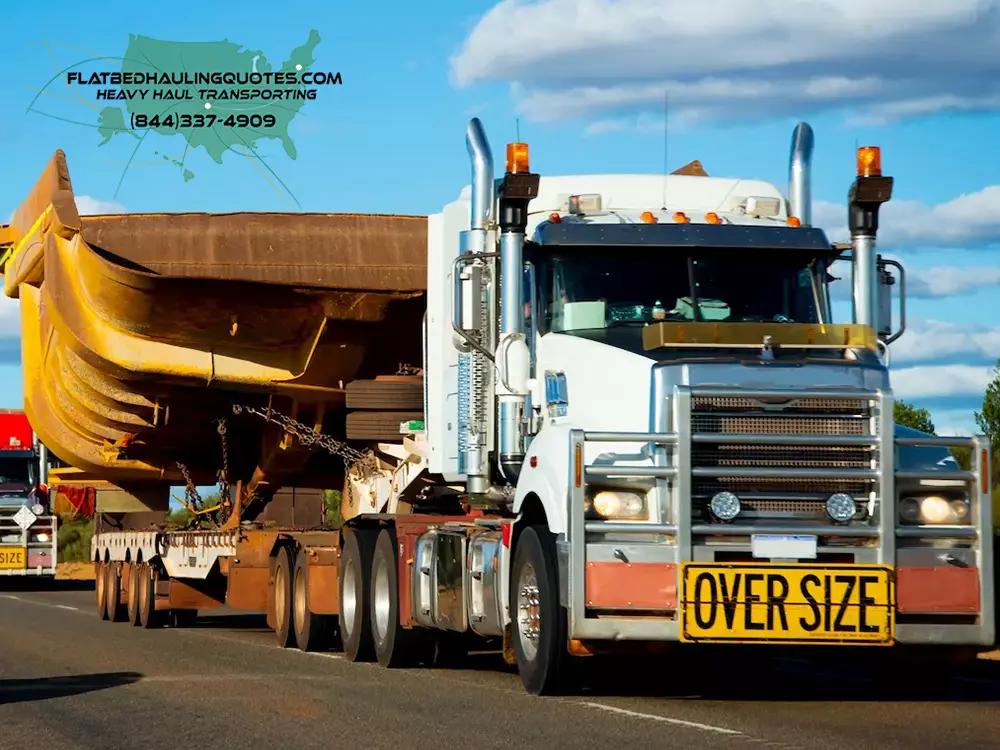Transporting Heavy Equipment Flatbed Trucking Companies Michigan Heavy Haulers

Transporting Heavy Equipment
Transporting heavy equipment can present a unique set of challenges and requires expertise to ensure the safe and secure delivery of these large and often delicate items. From planning and legal considerations to utilizing advanced technologies, navigating the world of heavy haul transportation services is essential for a successful transport operation.
Planning for Success
When it comes to transporting heavy equipment, proper planning is key to a successful operation. Before loading and transporting the equipment, it’s important to assess the weight and dimensions of the items to determine the best method of transport. This includes selecting the appropriate trailer or truck for the job, as well as ensuring that all necessary permits and escorts are in place.
In addition to logistical considerations, it’s also important to plan for any potential roadblocks or obstacles that may arise during the transport process. This could include identifying the best routes to take, as well as addressing any legal restrictions or regulations that may apply to transporting heavy equipment.
Navigating Legalities
Transporting heavy equipment involves navigating a complex set of legalities and regulations to ensure compliance with state and federal laws. This includes obtaining the necessary permits and clearances for oversize or overweight loads, as well as adhering to specific transportation requirements for different types of equipment.
Working with a reputable heavy haul transportation service provider can help ensure that all legal requirements are met, reducing the risk of fines or penalties for non-compliance. It’s also important to stay up-to-date on any changes to regulations that may impact the transport of heavy equipment, as failing to comply with these laws can result in delays and additional costs.
Utilizing Advanced Technologies
Advancements in technology have revolutionized the world of heavy haul transportation, making it easier than ever to transport large and heavy equipment safely and efficiently. From GPS tracking systems to specialized trailers and lifting equipment, there are a variety of tools and technologies available to streamline the transport process.
One of the key technologies used in heavy haul transportation services is load monitoring systems, which provide real-time data on the weight and distribution of the equipment being transported. This information is essential for ensuring that the load remains stable and secure throughout the transport process, reducing the risk of accidents or damage to the equipment.
In addition to monitoring systems, advances in software and communication technologies have made it easier than ever to coordinate and track the transport of heavy equipment. This includes route optimization software, which can help drivers navigate the best and safest routes to their destination, as well as communication tools that allow for real-time updates on the status of the transport operation.
Conclusion
Transporting heavy equipment requires expertise and attention to detail to ensure a successful and safe delivery. By planning ahead, understanding the legal requirements, and utilizing advanced technologies, transport operations can be streamlined and efficient, reducing the risk of delays or accidents.
Working with a reputable heavy haul transportation service provider is essential for navigating the challenges of transporting heavy equipment, as they have the experience and resources needed to ensure a smooth and successful transport operation. By following best practices and staying informed on the latest technologies and regulations, transporting heavy equipment can be a seamless process that delivers the equipment to its destination safely and on time.

